Pre-Columbian Art – Art Before the Americas
Pre-Columbian art encompasses a rich and diverse array of artistic traditions developed by civilizations in the Americas before the arrival of Christopher Columbus in 1492. From the intricate pottery of the Moche civilization in Peru to the monumental architecture of the Maya in Mesoamerica, pre-Columbian art reflects the complex societies, beliefs, and creative expressions of indigenous peoples across the continents. This art is characterized by its symbolic imagery, sophisticated craftsmanship, and deep connections to spirituality, nature, and daily life. Exploring pre-Columbian art offers a fascinating glimpse into ancient cultures and their artistic legacies that continue to captivate and inspire us today.
Key Takeaways
- Pre-Columbian art spans a diverse range of cultures, each with its distinctive style and media.
- These artworks offer valuable insights into the social structures and religious practices of the indigenous cultures.
- The legacy of Pre-Columbian art continues to be felt and studied, reflecting its lasting influence on both historical understanding and contemporary art.
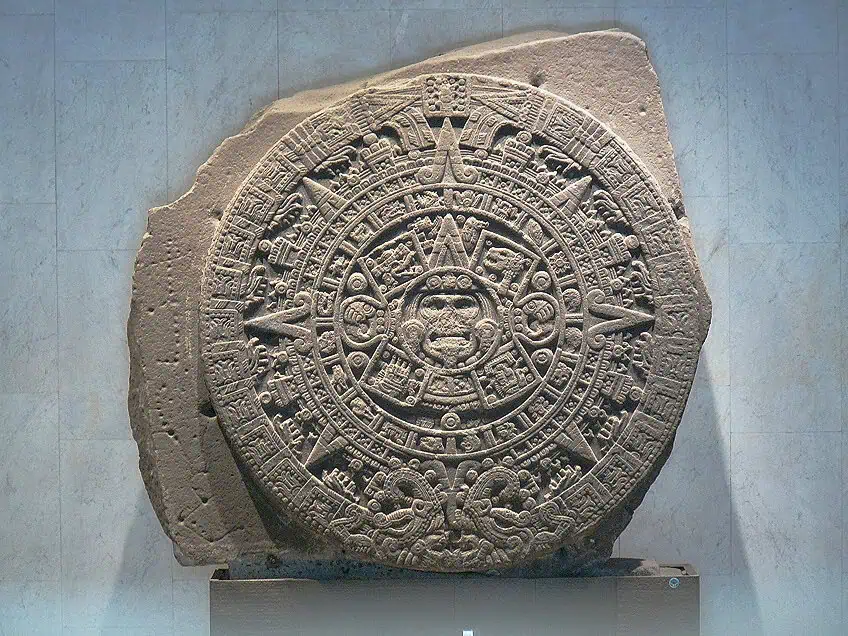
Historical Context
Pre-Columbian art encompasses the visual art forms created by the indigenous peoples of the Americas before the arrival of European explorers and colonists. It encapsulates a wide temporal span, broadly ranging from at least 13,000 BCE to the 16th-century European conquests. This artistic tradition includes a rich variety of media such as sculpture, textiles, pottery, and painting, reflecting the diverse cultures and societies that flourished across North, Central, and South America.
The artistic creations of these civilizations are not merely aesthetic artifacts but are deeply embedded in the cultural, religious, and social practices of their people.
They serve as a testimony to the creative spirit and craftsmanship of the Pre-Columbian societies. Despite the variations across different regions and time periods, these art pieces offer insight into the complex cosmologies, ritualistic traditions, and the intellectual achievements of the pre-contact Americas.
Pre-Columbian Civilizations
The term “Pre-Columbian” refers to the societies that existed in the Americas before the arrival of Christopher Columbus and subsequent European incursions. These indigenous civilizations developed complex societies, each with their own unique art, culture, and city structures. Chronologically, these civilizations spread across different eras and locations, from the Olmec and Maya in Mesoamerica to the Moche and Chavin in South America.

- Mesoamerica: Home to the Olmec, known for colossal head sculptures and regarded as the “Mother Culture,” influencing later societies like the Maya and Aztec.
- South America: Gave rise to the powerful Inca Empire in the Andean region, famous for Machu Picchu and innovative agricultural terraces.
- Central and North America: Hosted a variety of complex societies including the Aztecs, with their capital Tenochtitlan, and the cities built by the Maya civilization with advanced astronomical knowledge.
Major Empires and Kingdoms
Pre-Columbian America saw the rise and fall of powerful empires and kingdoms, each leaving behind monumental traces of their reign and artistic legacies.
- Aztecs: Dominated Central Mexico, known for their capital Tenochtitlan and significant contributions to art and architecture.
- Incas: Established one of the largest empires in pre-Columbian America, with Cusco as their capital, renowned for engineering prowess.
- Maya: Built monumental cities like Tikal and Chichen Itza, famous for their intricate writing system and calendar.
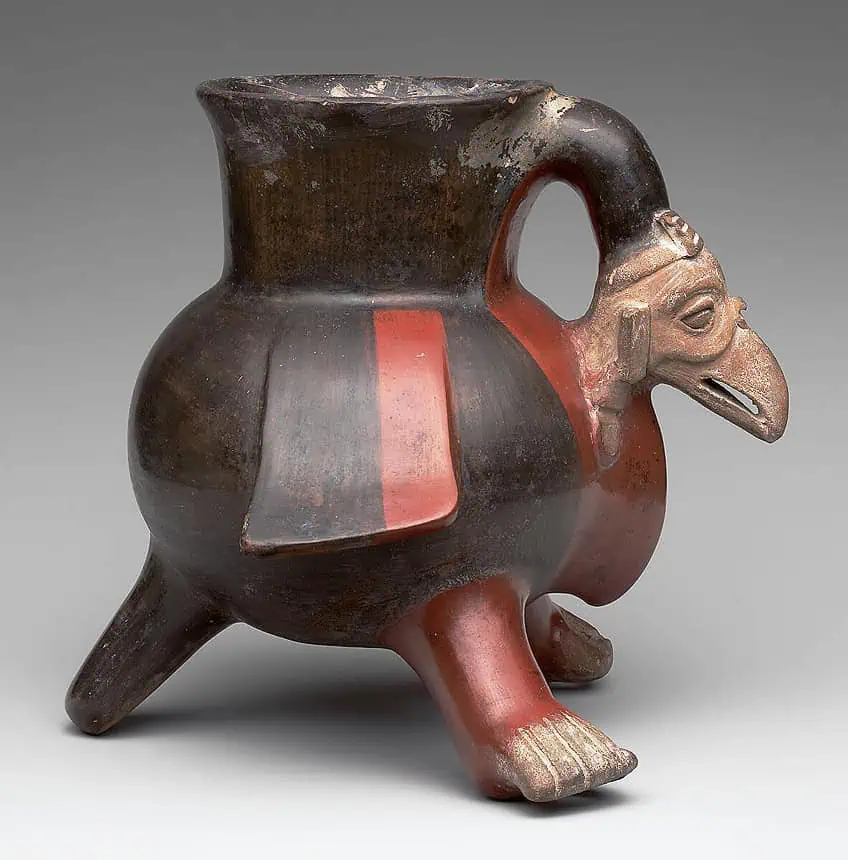
Other notable kingdoms and cultures that influenced Pre-Columbian art include the Moche, who created elaborate pottery in the Nazca River Valley, and the Wari Empire which left a legacy in the Andean region alongside the Nazca and Paracas cultures.
Each civilization, empire, and kingdom contributed to a rich tapestry of artistic expression that varied from monumental architecture to intricate textiles and pottery.
Artistic Traditions
Pre-Columbian art displays a remarkable variety of materials and techniques across regions and periods, encompassing stone and wood sculpture, intricate textiles, detailed metalwork, and expressive painting and murals.
Sculpture and Ceramics
Sculpture in the Pre-Columbian era predominantly utilized stone and wood. Stone sculptures ranged from colossal heads, like those made by the Olmec civilization, to delicate carvings found in other cultures. Ceramic work, another crucial facet of the Pre-Columbian artistic tradition, manifested in diverse forms from figurines to pottery. These pieces often had a functional role, but were also highly decorative, displaying polychrome finishes and intricate iconography.
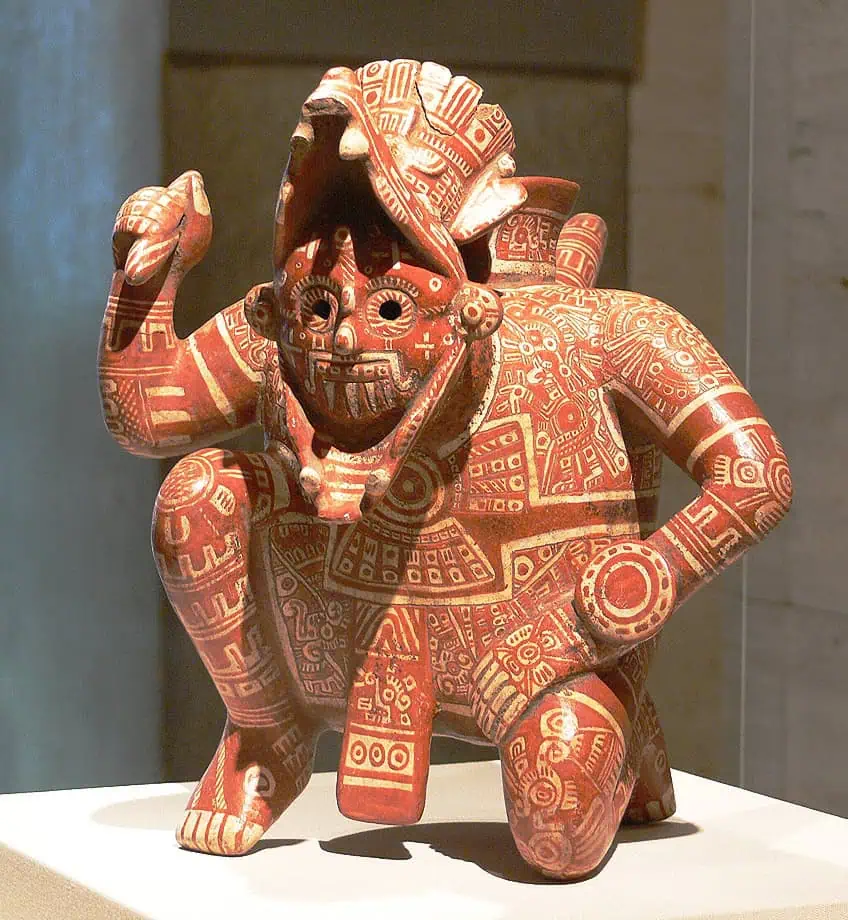
Textiles and Metalwork
Pre-Columbian cultures excelled in the creation of textiles, made from materials such as cotton and plant fibers, often adorned with feathers and dyed with vivid colors. Artisans wove these materials into complex patterns and garments that held both aesthetic and ceremonial significance. Metalwork was primarily seen in gold and silver artifacts.
These items were not only crafted for practical use but were also a means of artistic expression, often featuring intricate designs and used in religious ceremonies or as status symbols.
Painting and Murals
Murals and paintings captured the spiritual and daily lives of Pre-Columbian peoples with scenes rich in symbolism. They adorned temple walls, public spaces, and sometimes pottery, showcasing a range of scenes from religious rituals to depictions of gods. The use of vivid polychrome colors in these artworks added to their visual impact, making them powerful communicators of the values and beliefs of the time.
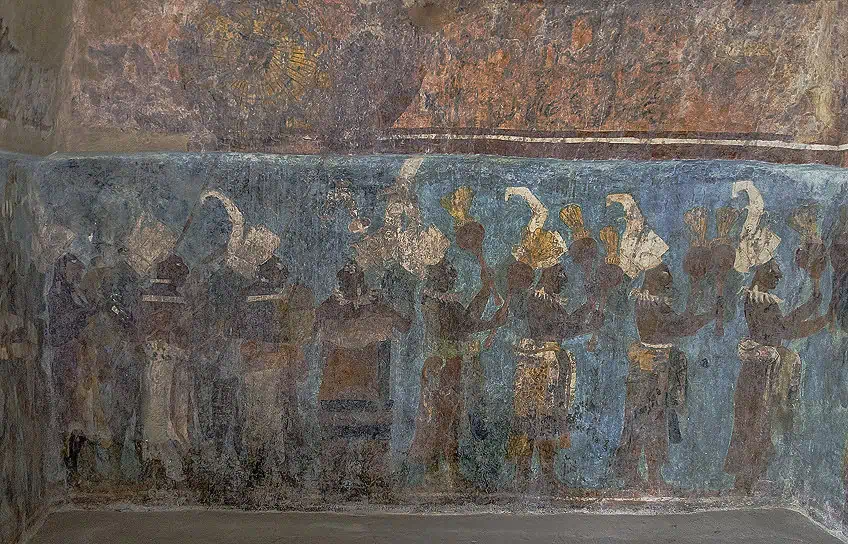
Cultural and Religious Influences
Pre-Columbian art is a profound reflection of the diverse mythologies, cosmologies, and religious ceremonies that shaped the native societies of the Americas before European contact. These artworks range from monumental architecture to intricate hieroglyphic writing, capturing both the everyday and the divine.
Mythology and Cosmology
Mythology and cosmology were integral to Pre-Columbian societies, profoundly influencing their art. The Maya, for example, developed a complex system of hieroglyphic writing to record their cosmological beliefs and historical events. These glyphs were often inscribed on stelae, pottery, and within their codices. The Maya calendar, another significant cultural achievement, intricately combined astronomy and religion to dictate the timing of rituals and agricultural cycles.
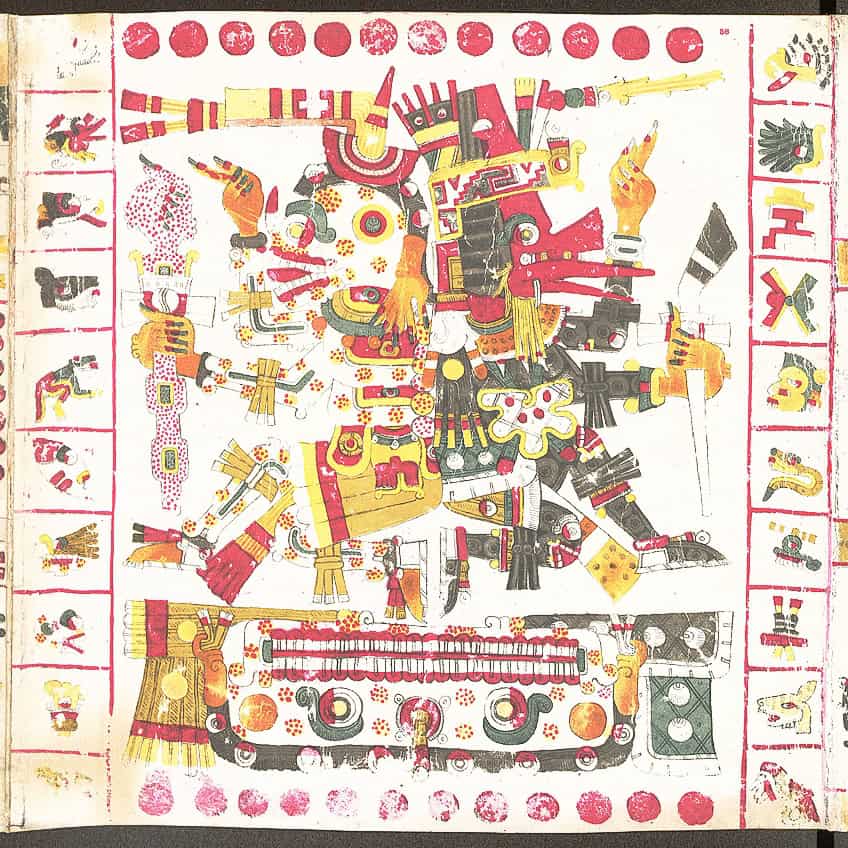
Central to Pre-Columbian art are the depictions of deities, such as the Aztec god Quetzalcoatl and the Maya maize god, which represent the fusion of mythological narratives with natural elements, a common theme across various cultures. These gods were often related to agricultural and fertility cycles, highlighting the deep connection between religion and the sustenance of society.
Rituals and Ceremonies
Rituals and ceremonies are vividly portrayed in Pre-Columbian art, demonstrating their critical role in maintaining the social order and appeasing the pantheon of gods. Sacrifices, both as offerings of objects and in some cultures as human offerings, were a widespread practice, believed to sustain the gods who, in turn, would support life, grant victories in war, and ensure the fertility of the land.
Artistic representations of these ceremonies often feature elite figures, indicating the hierarchy that was typically entwined with religious responsibility.
Rulers, priests, and other high-status individuals were key participants in religious ceremonies, highlighting their function as intermediaries between the gods and the people. The link between power and religious authority is a recurrent theme, reminding us that the production of art was a key element in reinforcing the societal structure of Pre-Columbian civilizations.
Influence and Legacy
Pre-Columbian art has left an indelible impact on the modern spectrum of art and culture, with its influence evident in contemporary artistic expression and its legacy preserved through rigorous academic study.
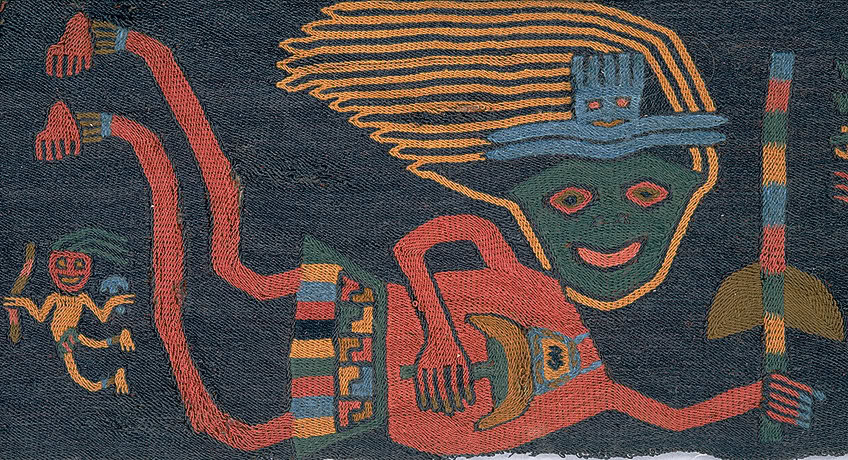
Impact on Modern Art and Culture
Pre-Columbian artworks, from monumental sculptures to intricate pottery, have significantly influenced modern art. Notable pieces such as the Gate of the Sun in Tiwanaku have inspired artists with their complex iconography and symbolic significance. The aesthetics of the Pre-Columbian era resonate in modern-day artwork, where themes of unity and ancestry are explored.
Trade of replicable items has further disseminated such styles into global art markets, thereby extending their reach.
Contemporary artists and designers often draw on the forms and motifs of Pre-Columbian art, integrating them with modern techniques. The bold geometries and abstract forms have become icons of inspiration in various sectors, influencing fashion (traditional patterns in textiles) and architecture (use of space and environment).
Preservation and Study
The academic world has played a critical role in preserving the legacy of Pre-Columbian art. Many works of art were buried, either intentionally as offerings or through the collapse of societies. Archaeologists and art historians have worked to excavate and interpret these artifacts, treating them as crucial testimonial objects that offer a glimpse into the world of their creators and users. Universities and museums around the world prioritize the preservation and study of Pre-Columbian artifacts. Such institutions hold collections that serve as:
- Repositories of history: Safeguarding delicate artifacts
- Centers for dducation: Providing resources for learning
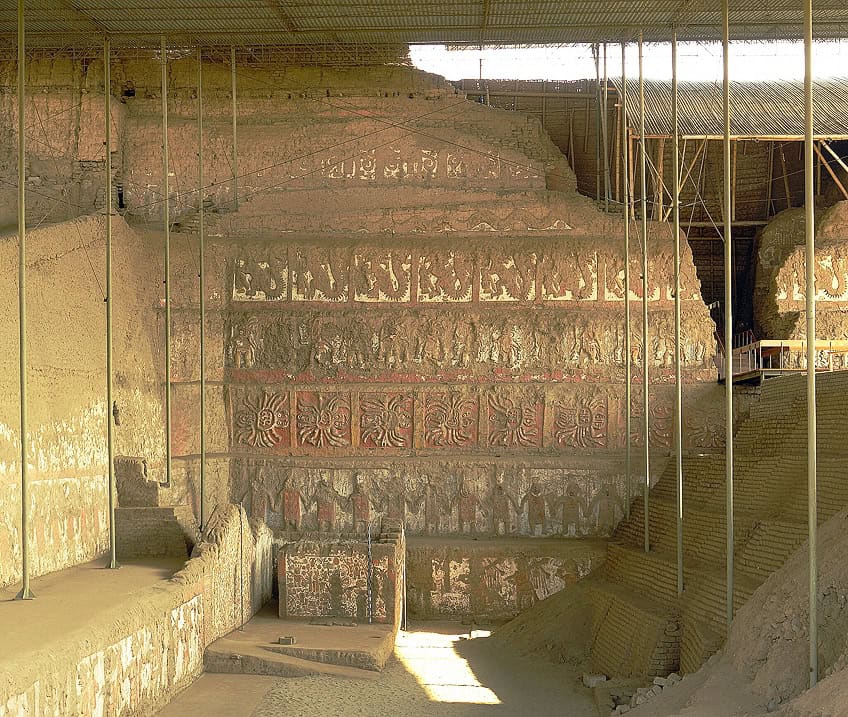
A significant part of preserving these artifacts includes understanding their context as tributes to gods, markers of trade routes, or as records of prolific ancestors. The continuous research efforts aim to honor the cultural importance of these works, ensuring they remain an important testament to ancient civilizations and their contributions to the world heritage.
Legacy of Pre-Columbian Art Today
Pre-Columbian art continues to be a source of inspiration and fascination in contemporary society. Artifacts from ancient Americas are housed in museums around the world, showcasing the ingenuity of cultures such as the Aztecs, Mayas, Incas, and their predecessors. These collections allow for educational opportunities and scholarly studies that provide insight into the rich tapestries of pre-contact Americas. Artists and designers often draw upon Pre-Columbian motifs and techniques, integrating them into modern fashions and artwork. These influences are evident in various domains:
- Textile design: Patterns found in ancient Peruvian textiles are reinvented in contemporary garments, highlighting the intricate weavings of the Paracas culture.
- Architecture: Some modern structures echo the pyramidal designs and stonework of Pre-Columbian temples and urban plans.
- Jewelry: The fine metalworking of pre-Chavín goldsmiths influences modern jewelry designs, perpetuating the tradition of intricate ornamentation.

Public exhibitions frequently feature Pre-Columbian goldwork, pottery, and textiles, demonstrating the luxury and skill embedded in these artifacts. The material culture of pre-Columbian societies is also a focal point in educational curriculums, promoting understanding of these civilizations’ achievements.
Moreover, Pre-Columbian art has also catalyzed important conversations surrounding heritage and repatriation.
Museums and institutions are increasingly engaging with source communities, leading to collaborations that honor the origins and legacies of these ancient artifacts. In recognizing the complexity and diversity of Pre-Columbian art, contemporary audiences acknowledge its significance and ensure that the legacy of the ancient Americas endures in today’s cultural tapestry.

Pre-Columbian art stands as a testament to the ingenuity, cultural richness, and artistic achievements of ancient civilizations in the Americas. From the exquisite goldwork of the Inca to the enigmatic stone sculptures of the Olmec, these artworks not only showcase remarkable technical skills but also provide valuable insights into the beliefs, customs, and daily lives of indigenous peoples. By studying and appreciating pre-Columbian art, we deepen our understanding of human history, celebrate cultural diversity, and honor the enduring legacy of these extraordinary artistic traditions.
Frequently Asked Questions
How Can One Authenticate the Originality of Pre-Columbian Artwork?
Authentication of Pre-Columbian artwork requires expertise in the area. Experts typically examine the provenance, materials, wear patterns, and stylistic attributes in line with established chronologies and known artifacts to ensure an item’s originality.
What Are the Distinguishing Characteristics of Pre-Columbian Art and Architecture?
Pre-Columbian art is renowned for its technical mastery and diversity. This art form includes detailed sculpture, fine ceramics, and intricate carvings. Pre-Columbian architecture often features monumental constructions such as pyramids, palaces, and ceremonial ball courts reflecting the sophisticated urban planning of the era’s societies.
What Is the Significance of Patterns and Symbols in Pre-Columbian Artworks?
Patterns and symbols in Pre-Columbian art are deeply symbolic, reflecting beliefs, cosmology, and social structures of various cultures. These designs often depict natural elements, deities, and mythological themes, providing insights into the spiritual and cultural dimensions of Pre-Columbian societies.
How Did Pre-Columbian Art Influence Modern Art and Culture?
Pre-Columbian art has significantly influenced modern art, offering a rich source of inspiration for artists exploring form, composition, and symbolism. Its aesthetic and iconography have been integrated into the styles and practices of modernist artists, reinforcing art’s universal and timeless qualities.
Jordan Anthony is a Cape Town-based film photographer, curator, and arts writer. She holds a Bachelor of Art in Fine Arts from the University of the Witwatersrand, Johannesburg, where she explored themes like healing, identity, dreams, and intuitive creation in her Contemporary art practice. Jordan has collaborated with various local art institutions, including the KZNSA Gallery in Durban, the Turbine Art Fair, and the Wits Art Museum. Her photography focuses on abstract color manipulations, portraiture, candid shots, and urban landscapes. She’s intrigued by philosophy, memory, and esotericism, drawing inspiration from Surrealism, Fluxus, and ancient civilizations, as well as childhood influences and found objects. Jordan is working for artfilemagazine since 2022 and writes blog posts about art history and photography.
Learn more about Jordan Anthony and about us.
Cite this Article
Jordan, Anthony, “Pre-Columbian Art – Art Before the Americas.” artfilemagazine – Your Online Art Source. May 2, 2024. URL: https://artfilemagazine.com/pre-columbian-art/
Anthony, J. (2024, 2 May). Pre-Columbian Art – Art Before the Americas. artfilemagazine – Your Online Art Source. https://artfilemagazine.com/pre-columbian-art/
Anthony, Jordan. “Pre-Columbian Art – Art Before the Americas.” artfilemagazine – Your Online Art Source, May 2, 2024. https://artfilemagazine.com/pre-columbian-art/.



